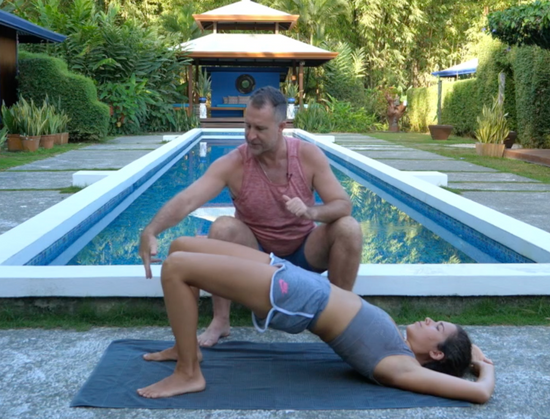Back spasms can be frustrating, painful, and often debilitating. A common cause of lower back pain, these spasms range from a one-off annoyance for some people to a chronic issue for others. However, there is some good news. Although back spasms are sometimes painful enough to warrant a hospital visit, they’re usually temporary and treatable.
Back spasms occur when muscles involuntarily contract, often in the lower back. Heavy lifting and sports are common causes, but they can also be triggered by simple movements. Hence, without proper diagnosis and treatment, back spasms have the potential to wreak havoc on a person’s daily life. If you suffer from back issues, knowing how to ease the pain as quickly as possible is crucial. However, it’s equally important to understand what causes back spasms and what you can do to prevent them from flaring up again.
What Causes Back Spasms?
When you experience a back spasm, it’s worth figuring out what your body is trying to tell you. Whether it’s a specific activity that your body can’t tolerate or the result of an underlying condition, a spasm can give you a lot of information. Although there’s no single cause for back spasms, most occur for the following reasons:
- The most common cause of back spasms is muscle, tendon, or ligament strain. A spasm can occur after any type of strain or injury to the spine. Heavy lifting is a regular offender, but any activity that puts excessive strain on the lower back can lead to injury. Sports, like football and golf, can cause spasms because they require quick and repeated turns of the back.
- Back spasms can also be a response to an underlying issue. Arthritis or a ruptured spinal disc can put pressure on the spinal cord, resulting in back and leg pains. If your back spasm doesn’t improve within 1–2 weeks, you may have an underlying anatomical problem.
- Anatomical problems can also lead to back spasms. Weak abdominal muscles, weak lower back muscles, and tight hamstrings can all make lower back spasms more likely.
Symptoms of Back Spasms
Typical symptoms of back spasms include tension in the lower back, sharp and intense pains, recurring lower back pain, and difficulty moving after bending down. People who suffer from back spasms often find that the pain intensifies after doing certain activities. Sitting down or standing for long periods can also be a trigger. However, although people tend to experience back spasms specifically in the lower back, they can also affect other parts of the body. Some sufferers might develop pains in their legs, while others might notice hip pain.
Treatment for Back Spasms
If you suffer from a back spasm, relieving the pain is the first thing to focus on. Relaxing the muscles, reducing inflammation, and reducing stress on the body can all help to ease the pain. Effective treatments for back spasms include:
Ice and Heat Therapy
Applying ice to the affected area can help to reduce local inflammation, which in turn can help to ease the pain. While suffering from a back spasm, apply ice for 15–20 minutes, three to four times a day. Just make sure to wrap the ice in a towel before applying it to your skin, or use a suitable cold pack to avoid ice burn. Alternating ice and heat can also be an effective way to ease muscle tension. Try applying a heating pad for 20 minutes, followed by an ice pack, with a 20-minute break in between.
Massage

Massage can also help to reduce tension and stop the spasm. To massage the area effectively, press firmly on the painful spot for 30–60 seconds. Then rub the surrounding areas in a circular motion. A firm massage should be uncomfortable, but not painful. Also, if you feel a pulse in the area, do not apply any pressure.
Ease stress on the body
During a severe spasm, moving might be too painful. In this situation, it’s best to ease any stress on the body by getting into a more comfortable position and resting. To do so, lie on your back on a firm surface and place a pillow under your knees. Alternatively, you can lie on your side with a pillow between your knees.
Medication
Although medication is not recommended for the long-term treatment of back pain, it can be useful for temporary pain relief. Non-steroidal anti-inflammatory drugs (NSAIDs), such as ibuprofen and aspirin, can help to slow spasms and reduce pain. Meanwhile, doctors can prescribe muscle relaxants when people have chronic spasms. But they should only be used for 72 hours and side effects vary from every medication.
Gentle Movement
Moving gently and for limited amounts of time is usually much better than lying in bed. Once the pain is bearable, try walking slowly around the house several times a day. As you build up tolerance and the pain eases, try to make your walks increasingly longer. Walking encourages blood flow, which helps to speed up the healing process. In addition to walking, simple yoga poses can also help to reduce tension and stretch the lower back. Child’s pose and cat-cow are both wonderful poses for easing lower back pain.
Preventing Spasms
According to the American Chiropractic Association, around 80 percent of the U.S. population will suffer from back pain at some point during their lives. Luckily, taking care of your back is the best way to reduce your risk of developing problems. In terms of long-term prevention, yoga, massage, stress reduction, acupuncture, and Tai Chi are all effective ways to support your back health. However, lifestyle changes, such as exercising regularly and avoiding extended periods of sitting, can also help significantly.
Back spasms often ease without treatment. However, don’t hesitate to visit your doctor when you experience acute lower back pain and consider making lifestyle changes to prevent it from happening again. If you’re interested in learning more, sign up for our FREE webinar to learn the #1 hack to get rid of back pain!
Tags: backhealth, Health
Book/Inquire Now
Got pain? This will help you!
YOU DESERVE TO LIVE PAIN-FREE...
Receive 7 short, simple, and effective practices to alleviate knee, hip, low back, neck, shoulder pain, and more!
All you need is 5 minutes per lesson and it's FREE!
This revolutionary approach to yoga is new, and no one else is teaching this! Since I created Applied Yoga Anatomy + Muscle Activation™ and started teaching it consistently, I've witnessed students heal long-standing injuries, access yoga postures they never thought possible, and tell me over and over again how their body just feels better.
I hope you'll join me on this journey!
~Yogi Aaron
Is Yoga Teacher Training Right For Me?
We Created This FREE 5 Part Series So You Can Get All The Information To Make The Right Choice.
In this series, you will learn:
-
- Am I a candidate for yoga teacher training??
-
- What will I learn in a YTT?
-
- Do I need to have a perfect downward dog to attend YTT?
14-Day 200-Hour Yoga Teacher Training in Costa Rica
If you are looking for a 14-day 200 hour Yoga Teacher Training Costa Rica Immersion, you have landed in the right place. Join the next one!
300-Hour, 28-Day Yoga Teacher Training
Do You Feel Called To Something Greater?
This 300-Hour Yoga Teacher Training immersion training at Blue Osa will immerse you in yoga for one month.
You will have the specific transformational skills and yogic practices you need in order to connect with your higher purpose.
And more! You will be able to offer these transformative skills to others!





